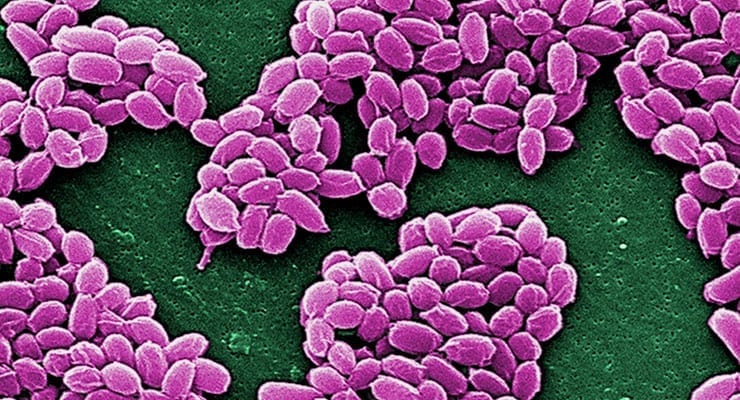A new study from researchers at the U.S. Army Medical Research Institute of Infectious Diseases (USAMRIID) shows that anthrax capsule–a naturally occurring component of the bacterium that causes the disease–is a highly effective vaccine component that should be considered for incorporation in future generation anthrax vaccines.
Bacillus anthracis, the bacterium that causes anthrax, produces three main components that allow it to cause disease–lethal toxin, edema toxin, and capsule. During anthrax infection, the bacterium invades and grows to high concentrations in the host. The capsule surrounds the bacterium and prevents it from being ingested and destroyed by the white blood cells, thus allowing anthrax infection to progress. The toxins are thought to act mainly by damaging the body’s natural defense mechanisms.
Read also: BARDA Seeks Next-Generation Anthrax Vaccine
Current human vaccines for anthrax are based on the protective antigen component of the anthrax toxins. USAMRIID scientists have extensively studied protective antigen, demonstrating that protective antigen alone confers protection in animal challenge studies with both rabbits and monkeys.
However, according to senior author Arthur M. Friedlander, M.D., of USAMRIID, concerns about reliance on a single antigen–as well as the issue of protecting against anthrax strains that may be vaccine resistant–have prompted the search for additional vaccine components. Bacterial capsules are commonly used in licensed vaccines for other diseases, including certain types of pneumonia and meningitis.
Friedlander’s group had already demonstrated in published studies that the anthrax capsule plays a role in conferring protection. In their current work, the team describes testing a higher dose of the capsule vaccine in monkeys against a lethal aerosol challenge with anthrax spores. All the animals receiving the capsule vaccine survived while all non-vaccinated animals succumbed to the disease.
Read also: USAMRIID’s Small-Molecule Antiviral Shows Efficacy Against Ebola
“In the 140-year history of research on anthrax there have been two previous types of vaccine, the last one licensed in 1970,” Friedlander said. “This new capsule vaccine is expected to work against possible vaccine-resistant strains of anthrax and to protect individuals who may not respond optimally to protective antigen alone. In addition, it could be combined with protective antigen to create a multi-component vaccine that may enhance the efficacy of protective antigen- based vaccines.”


